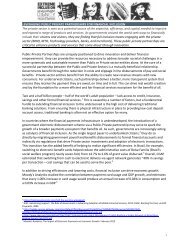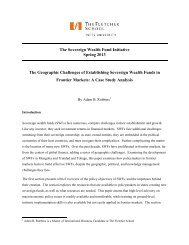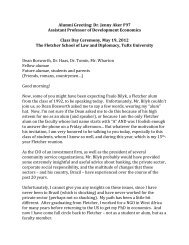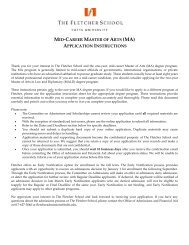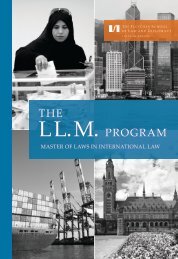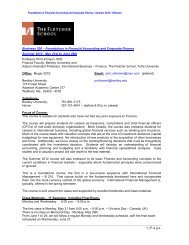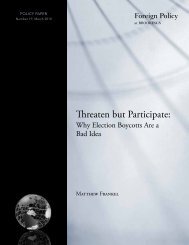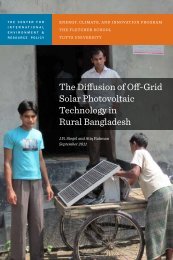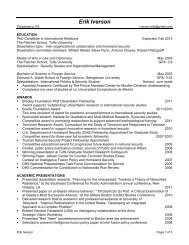creating a mutual Gains climate regime through universal clean ...
creating a mutual Gains climate regime through universal clean ...
creating a mutual Gains climate regime through universal clean ...
You also want an ePaper? Increase the reach of your titles
YUMPU automatically turns print PDFs into web optimized ePapers that Google loves.
Creating a Mutual <strong>Gains</strong> Climate Regime Through Universal Clean Energy ServicesThe <strong>climate</strong> protection component of the treaty needs to be designed to address generalobligations as well as specific issue areas, perhaps <strong>through</strong> separate protocols such as,for example, a protocol on promoting energy efficiency and <strong>clean</strong> energy services (Nicol,2011), a protocol for other GHGs such as methane and nitrous oxide, a protocol onblack carbon, a protocol on achieving synergies between mitigation and adaptation, andprotocols on other relevant issues such as geoengineering and <strong>climate</strong> refugees. TheREDD+ agreement on protecting forests demonstrates the success of this approach.Once <strong>climate</strong> response is disaggregated <strong>through</strong> separate protocols, it is easier to bothmake and measure progress.4.2 Towards a Different Normative Push for ActionA <strong>mutual</strong> gains agreement assumes that countries are better off with an agreementthan with the alternatives to the agreement, but their perceptions of gains from theagreement may change over time. As countries’ rational incentives for engagement vary(e.g. due to leadership, technological innovation), the normative dimension of theirengagement with <strong>climate</strong> change is particularly relevant. Norms are the standards ofappropriate behaviour within a certain group. The central norm of the <strong>climate</strong> treatyis that the proper behaviour to protect the <strong>climate</strong> is to reduce GHG emissions. Ideally,this norm would have evolved if states had embraced it; once the critical mass ofrelevant states was persuaded that this was the right thing to do, then the norm wouldacquire a ‘taken for granted quality’ (Finnemore and Sikkink, 1998). This norm clearlyemerged although despite a myriad of norm entrepreneurs, it did not acquire sufficientadoption that would lead to its internalization by relevant states such as the majoremerging economies and the US.Once <strong>climate</strong> change is reframed as a problem of unsustainable development thatcan best be addressed by providing <strong>clean</strong> energy services, it is essential to create aset of measures that will make these services available. About 1.5 billion people stilllack access to electricity (AGECC, 2010), and around 2.5 billion people contributesignificant amounts of CO 2to the atmosphere and <strong>climate</strong>-warming black carbon bythe unsustainable use of firewood and other biomass as their primary source of energy(IEA, 2009). Reducing energy poverty is crucial for their development. In energypoor communities, an additional unit of energy service brings far greater substantialimprovement in quality of life than in energy-rich communities (UNDP, 2005; Gaye,2007; Haas et al., 2008).The provision of <strong>clean</strong> energy services is also difficult in rich countries, especiallywhen energy sources are used in an unsustainable way <strong>through</strong> overconsumption and afailure to constrain the use of high-carbon pathways. For example, fossil-fuel subsidiesaround the world were US$557 billion in 2008, up from US$342 billion in the previousyear (IEA, 2010). The opportunity for all to benefit from enhanced technologicaland commercial innovation and expanded energy markets should engage the private14 Center for International Environment and Resource Policy, The Fletcher School, Tufts University



